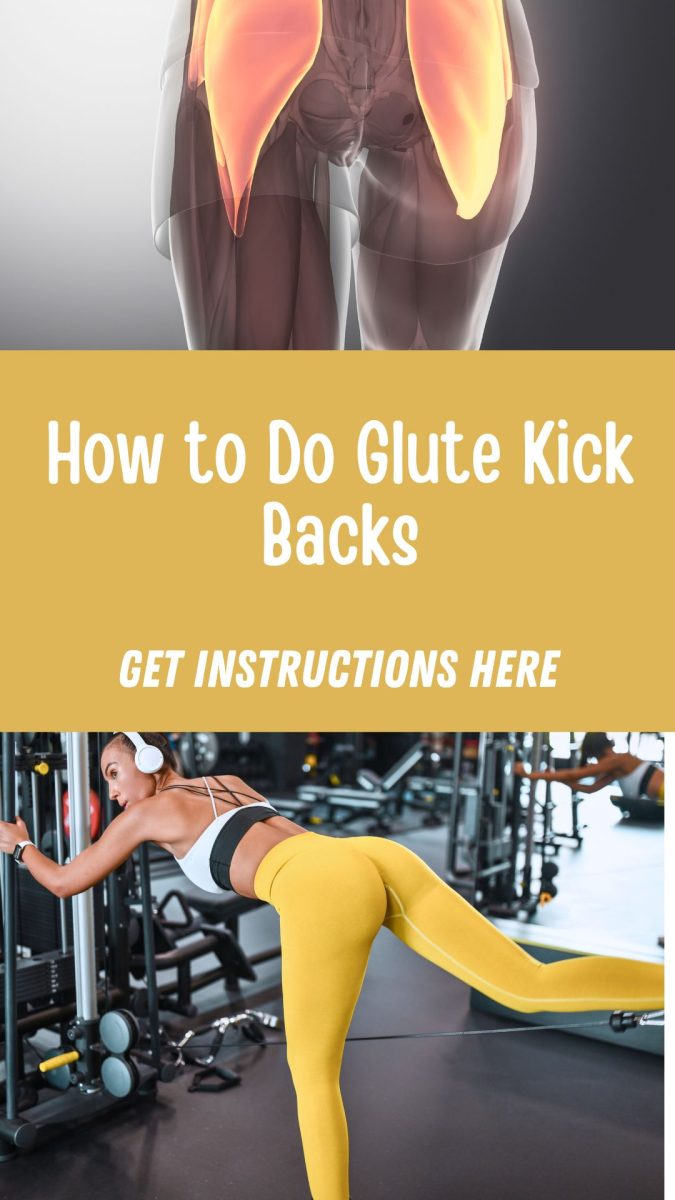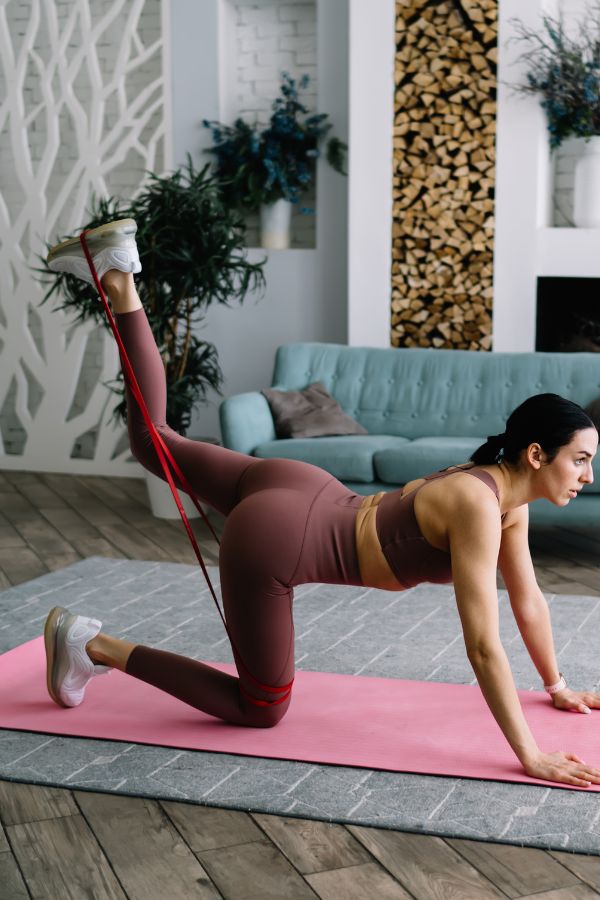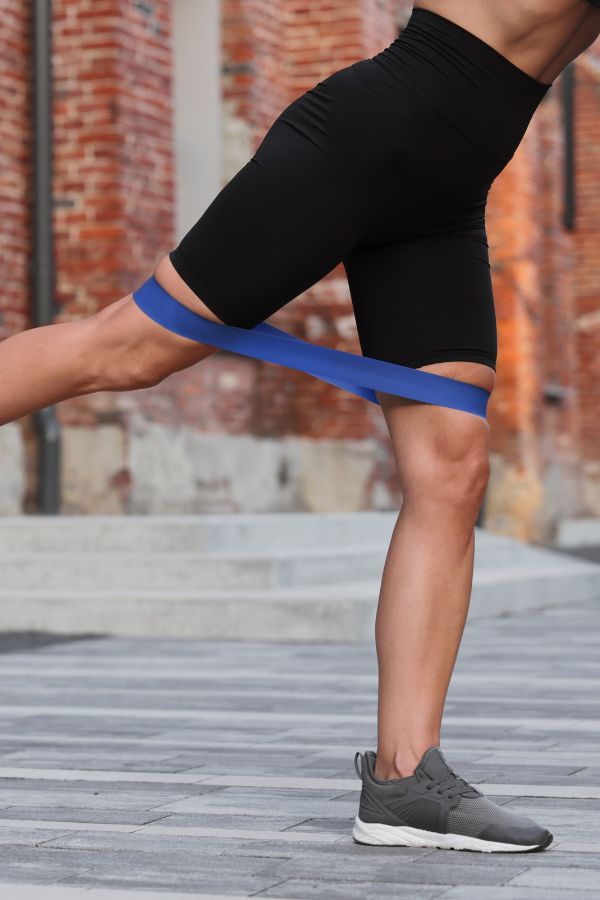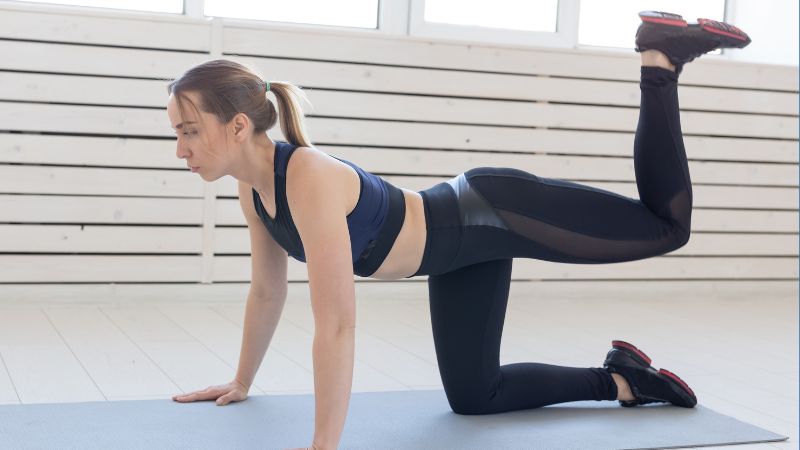Kick backs are a simple yet powerful exercise that targets the glutes. This move involves extending your leg behind you in a controlled motion, helping tone and strengthen your rear while also engaging your core and hamstrings. Kick backs can be done standing, on all fours (quadruped position), or using resistance bands or cable machines. Let’s talk about how to do glute kick backs the right way to help you on your fitness journey.

What Are Kick Backs?
The primary muscle activated during kick backs is the gluteus maximus. Supporting muscles include the hamstrings on the back of the thigh, the lower back muscles for stabilization, and the core muscles to help maintain balance and posture. Depending on how the movement is performed, bodyweight, banded, or on a machine, different muscle groups can be emphasized more. When performed correctly, kick backs are one of the most targeted exercises for building glute strength and shape.

Benefits of Kick Backs
Kick backs offer several important benefits. First, they help build stronger, more lifted glutes, which can enhance overall lower body strength and appearance. Strengthening the glutes also helps improve posture, relieve back pain, and increase performance in other exercises like squats, lunges, and running. Kick backs are also a great option for people who want to work their lower body without putting too much pressure on the knees or lower back. Because they don’t require any equipment, they’re ideal for home workouts and beginners.
To do a basic kick back on all fours, start in a tabletop position with your hands under your shoulders and knees under your hips. Engage your core to keep your spine neutral. Without shifting your weight or arching your back, lift one leg and extend it straight behind you, squeezing your glutes at the top of the movement. Pause for a second, then slowly return your knee to the starting position. Repeat for 10 to 15 reps, then switch legs. Be sure to move slowly and with control, avoiding momentum.
Standing Kick Backs
For standing kick backs, stand tall with your feet hip-width apart. Hold onto a wall or chair for balance if needed. Engage your core, shift your weight onto one foot, and extend the opposite leg straight behind you without leaning forward. Squeeze your glutes at the top and avoid arching your back. Bring your leg back to starting position and repeat for 10 to 15 reps per side. This variation challenges your balance and can be intensified with ankle weights or resistance bands.
Using Resistance Bands for More Challenge
To make kick backs more challenging and effective, you can add a resistance band around your thighs or ankles. This creates more tension and forces your glutes to work harder during each rep. For banded kick backs on all fours, place the band above your knees or around your ankles. Maintain the same form as the basic version, making sure to control both the upward and downward movements. Resistance bands are inexpensive, portable, and great for progressive training.

Common Mistakes to Avoid
One of the most common mistakes in kick backs is arching the lower back instead of using the glutes. This reduces the effectiveness of the move and can lead to lower back pain. To prevent this, keep your core tight and avoid lifting your leg too high. Another mistake is swinging the leg quickly without control. Momentum does the work instead of your muscles, so always move slowly and with purpose. Finally, don’t lock out your supporting arm or leg; keep a soft bend in your joints to avoid strain.
Kick backs can be modified to suit different needs. For beginners or those with limited mobility, perform kick backs while seated on the edge of a chair, leaning forward slightly and extending one leg at a time behind you. For a greater challenge, try cable machine kick backs at the gym. You can also perform donkey kicks, which involve bending the knee and pressing your heel upward instead of straightening the leg. Mixing up your variations helps target the glutes in different ways and prevents workout boredom.
Kick backs can be added to any lower-body or full-body workout. They’re ideal as a glute activation move at the beginning of your workout to wake up the muscles before squats or lunges. You can also include them in a circuit for toning, or add them to your cool down for gentle strength work. Aim for 2 to 3 sets of 10 to 15 reps per leg. If you’re using resistance, reduce the reps slightly and focus on slow, controlled movements.
Beginner exercises
For more basic strength training exercises, check these out:
- The Ultimate Guide to Tricep Extensions for Stronger Arms
- The Ultimate Guide to Bicep Curls for Muscle Growth
- How to Do a Perfect Beginner Squat
- Bodyweight Lunges for Beginners





No comments! Be the first commenter?